
Date: September 10, 2019
Location: Lat: 39.80403°, Lon: -66.21417°
Dive Depth Range: 2,510 - 2,668 meters (8,235 - 8,753 feet)
Access Dive Summary and ROV Data
A dive on the eastern side of Retriever Seamount reveals a diverse sponge community, much to the delight of our biology lead. Video courtesy of the NOAA Office of Ocean Exploration and Research, Deep Connections 2019. Download larger version (mp4, 73.7 MB).
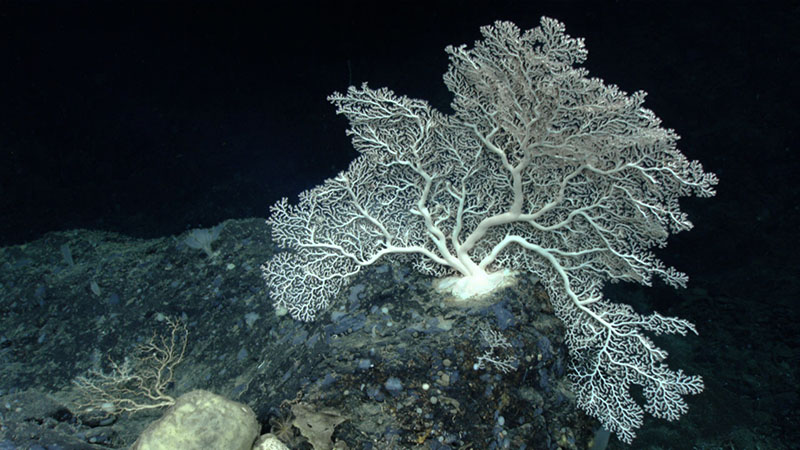
A pink coral (Corallium sp.) on a rock outcropping, as seen at Retriever Seamount. Image courtesy of the NOAA Office of Ocean Exploration and Research, Deep Connections 2019. Download larger version (jpg, 1.3 MB).
Today’s dive took place on Retriever Seamount, which lies within the Northeast Canyons and Seamounts Marine National Monument. Previous dives on Retriever Seamount surveyed depths greater than 3,800 meters (12,467 feet) or less than 2,400 meters (7,874 feet), so this dive sought to explore the depth range between those previous dives in order to add new information about the diversity of habitats across depths at this seamount. Additionally, our dive track was planned to survey the southeast corner of Retriever Seamount, an area which had not yet been explored. The site was expected to contain highly suitable habitat for deep-sea corals and sponges as a result of its steep slopes, which were identified through seafloor mapping.
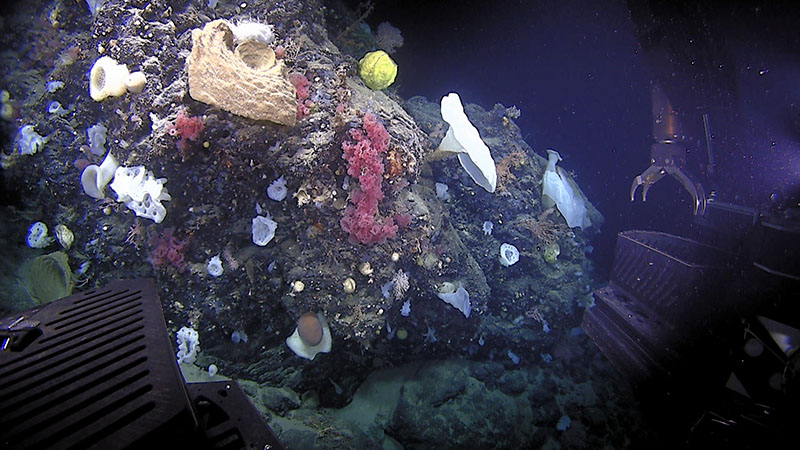
A large diversity of corals and sponges were seen on dive 9 of the Deep Connections 2019 expedition on Retriever Seamount. Image courtesy of the NOAA Office of Ocean Exploration and Research, Deep Connections 2019. Download larger version (jpg, 1.3 MB).
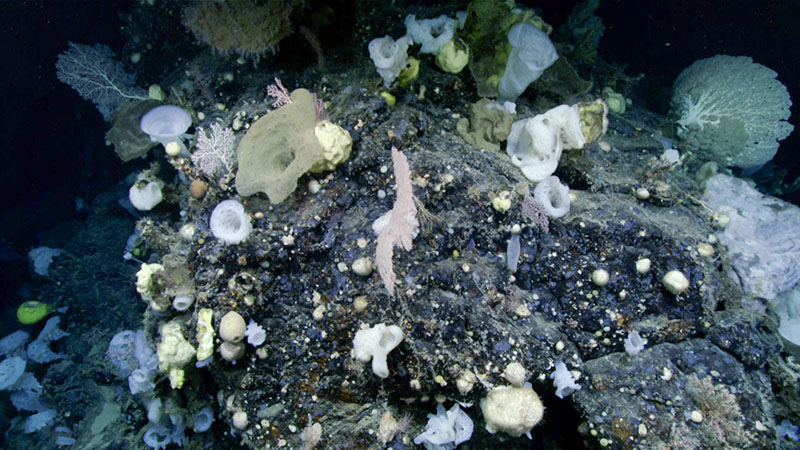
A stunning array of corals and sponges adorned most areas explored during dive 9 of the Deep Connections 2019 expedition on Retriever Seamount. The high diversity and density seen here was characteristic of the entire dive. Image courtesy of the NOAA Office of Ocean Exploration and Research, Deep Connections 2019. Download larger version (jpg, 1.6 MB).
The remotely operated vehicle (ROV) reached the seafloor at a depth of 2,668 meters (8,753 feet). The geological character of this dive was very uniform, and consisted of igneous talus and sheer seamount walls. Both corals and sponges were observed in high densities throughout this dive, with a particularly large abundance and diversity of sponges. Observed sponges included Euplectellid glass sponges, Rossellid vase sponges, fragile Euretid wide-mouth vase sponges, Polymastia sp., Geodia sp., encrusting demosponges, and a number of unknown sponges. The deep-sea coral community consisted of bottlebrush golden corals, pink corals, large fans of bubblegum corals, soft corals, and stoloniferous corals. Mobile organisms seen on this dive included halosaurs, cusk eels, rattail fish, juvenile king crabs, and squat lobsters. Samples collected were primarily focused on documenting the wide range of sponges of this area, but also included a Nidalliidae soft coral growing on a large Euritid sponge.
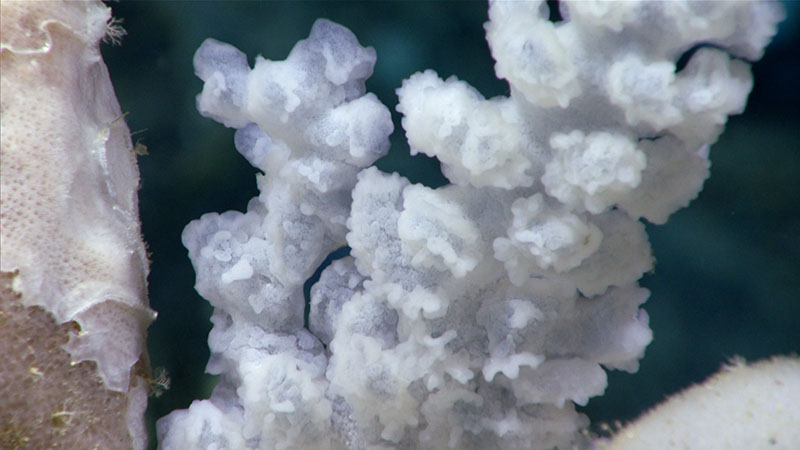
This undescribed sponge was seen during dive 9 of Deep Connections 2019 expedition. Image courtesy of the NOAA Office of Ocean Exploration and Research, Deep Connections 2019. Download larger version (jpg, 938 KB).
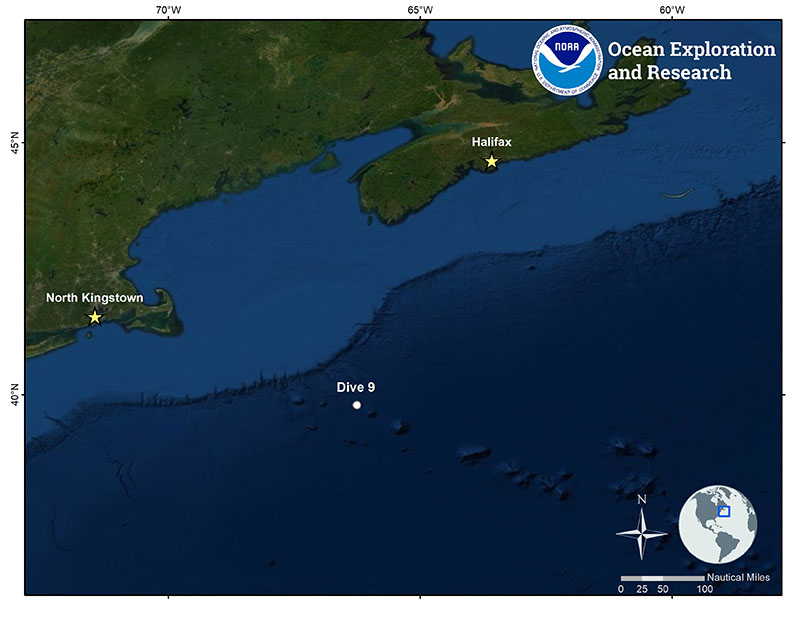
Location of dive 9 of the Deep Connections 2019 expedition on September 10, 2019. Download larger version (jpg, 1.7 MB).
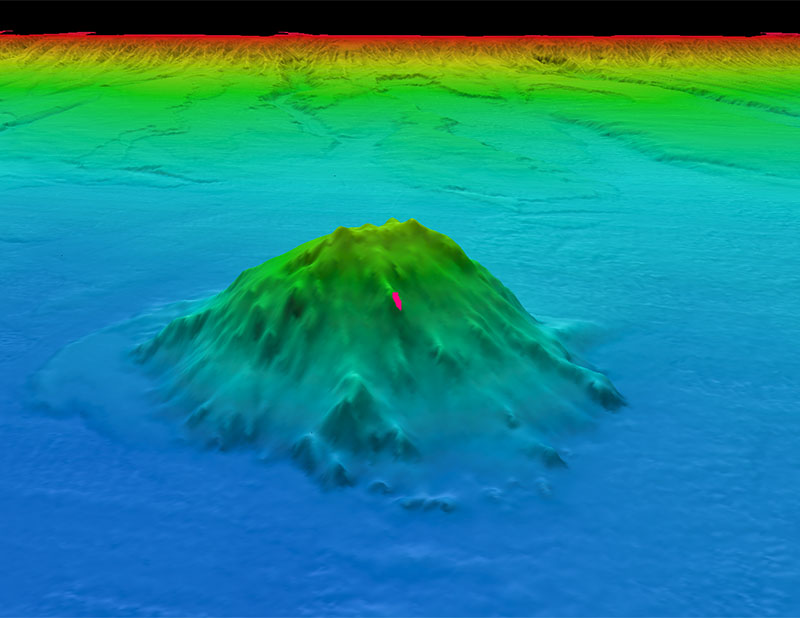
Map showing the dive track of dive 9 of the Deep Connections 2019 expedition. Scale is water depth in meters. Download larger version (jpg, 776 KB).